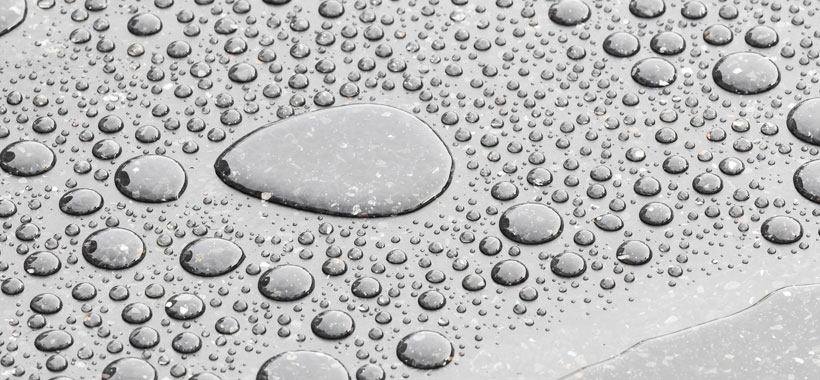How to prevent concrete coating failure due to moisture
The largest financial problem in the resinous coatings industry is failure due to moisture. Some estimate this problem to cost over 1 billion dollars per year in the United States. This article will hopefully shed some light on not only the problems but how to correctly test a concrete slab for moisture.
Let’s start by looking at ways flooring can be exposed to moisture in the concrete.
- Water of Convenience: Simply stated this is the water used by the concrete company to keep the concrete “wet” enough to be able to properly place it. The typical cement to water ratio should be .45-.50, However, today we are seeing these ratios climb to give the concrete crew more time to “work” with the concrete. This water typically hydrates the curing process and then excess water evaporates.
- Improperly Installed Vapor Barrier: This is material placed before the concrete is poured with the design to block or slow down moisture from the ground finding its way into the slab. There are design standards for this, with the main goal being to reduce the permeance of water into the concrete.
- Inadequate Water Drainage: Water from rain or snow melt that doesn’t properly drain away from the building.
- Concrete Being Exposed to Rain/Snow: If the building and concrete are exposed to these weather elements before it becomes enclosed, it will add unexpected water to the concrete.
As a contractor, testing for moisture in concrete is a must. Yet it is estimated that 90% of all flooring contractors do not possess the proper testing equipment, and those who do own the equipment do not follow ASTM guidelines. The largest ASTM guideline not being accounted for is NOT TESTING A CONCRETE SLAB THAT HAS HAD AT LEAST 48 HOURS TO ACCLIMATE TO IT’S SERVICE TEMPERATURE. Improper testing leads to misinformation which leads to bad decisions which leads to flooring failures.
In today’s construction environment everything is about time and money. Building owners are anxious for their building to be ready to occupy, and the general contractor makes sure that happens. This “fast-track” method typically does not account for the 72 hours to allow a proper moisture test to be completed. If the testing is completed and shows high moisture content, there are another few days to properly install a topical moisture mitigation product, such as Thermal-Chem’s #211 VaporGard.
Two tests that provide false negative or false positive tests are the Plastic Sheet Method and the use of a moisture meter with pins that are pushed into the concrete. If you are going to rely on these tests, it is recommended that you exclude any future problems as a result of moisture damage in the Terms and Conditions of your proposal.
The two tests that are typically accepted by ASTM and architects are the F-1869 Calcium Chloride Test and ASTM F2170 In-situ Relative Humidity. The calcium chloride test presents its results in lbs. per 1000 square feet, the relative humidity results are given in the percentage of moisture in the concrete.
Our #211 VaporGard has been independently tested lab in 2022, and the 4 samples effectively reduced moisture vapor transmission by 80%. Thermal-Chem is committed to helping you complete your projects from the beginning through the useful life of the products you have installed. If you have any questions, please call us at 1-800-635-3773.

